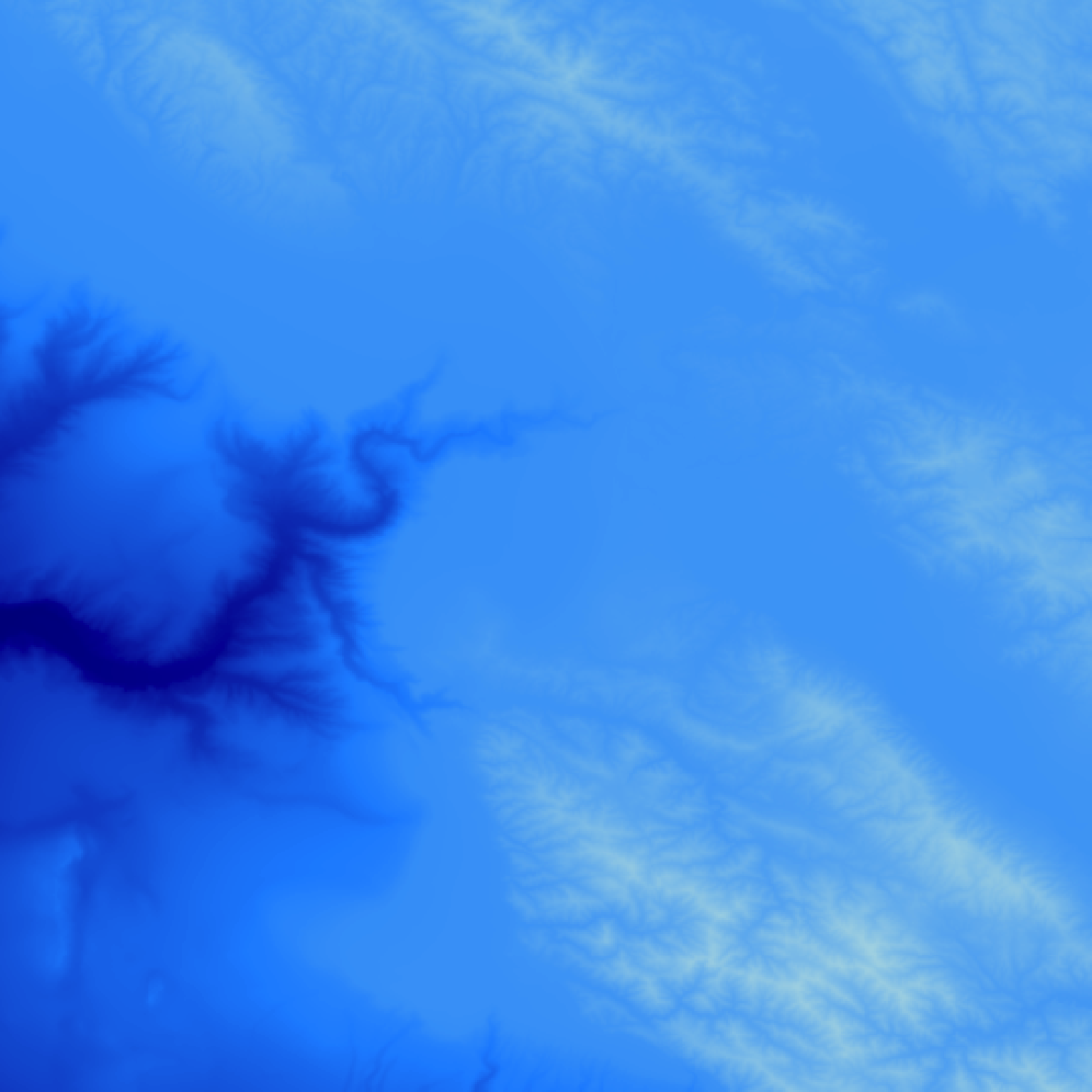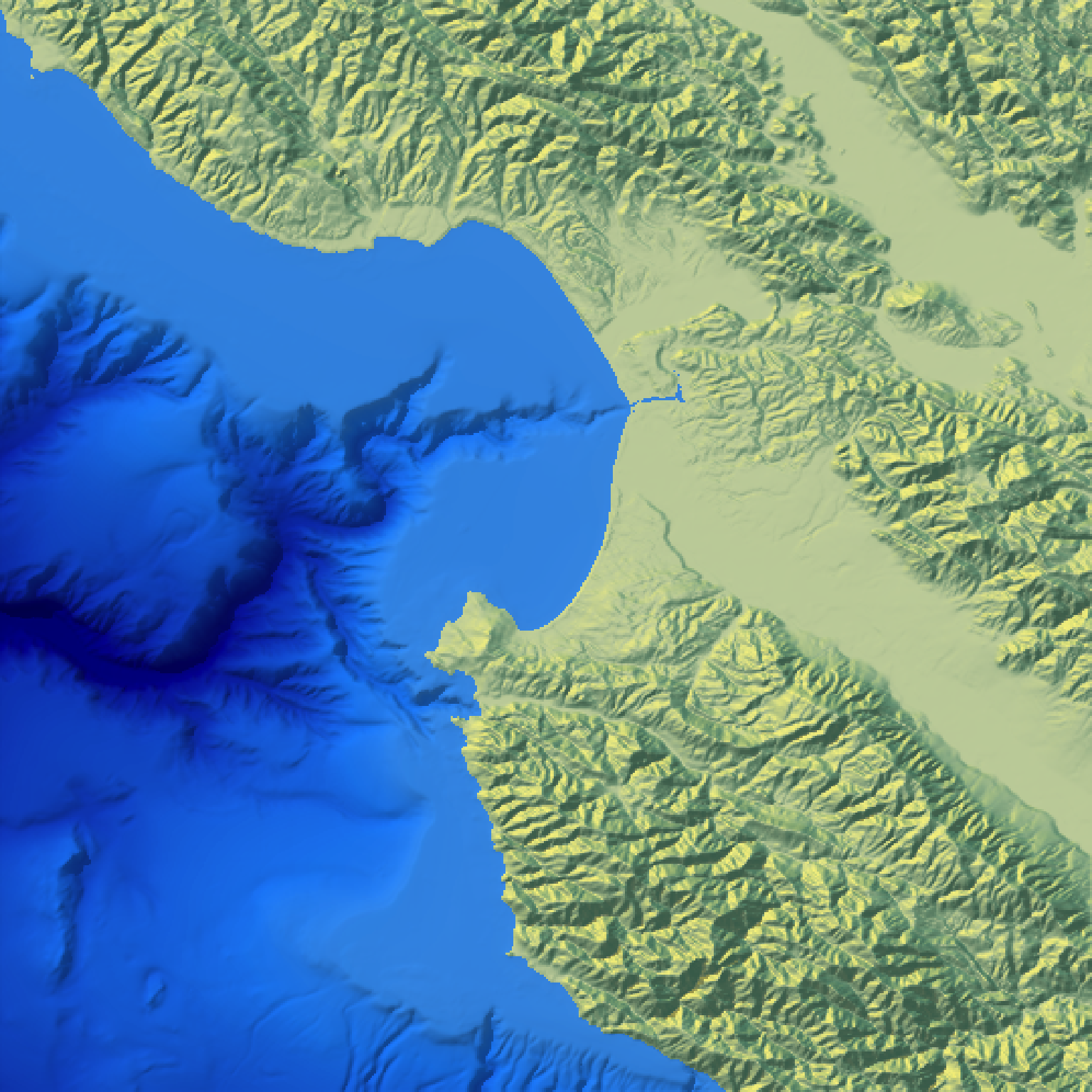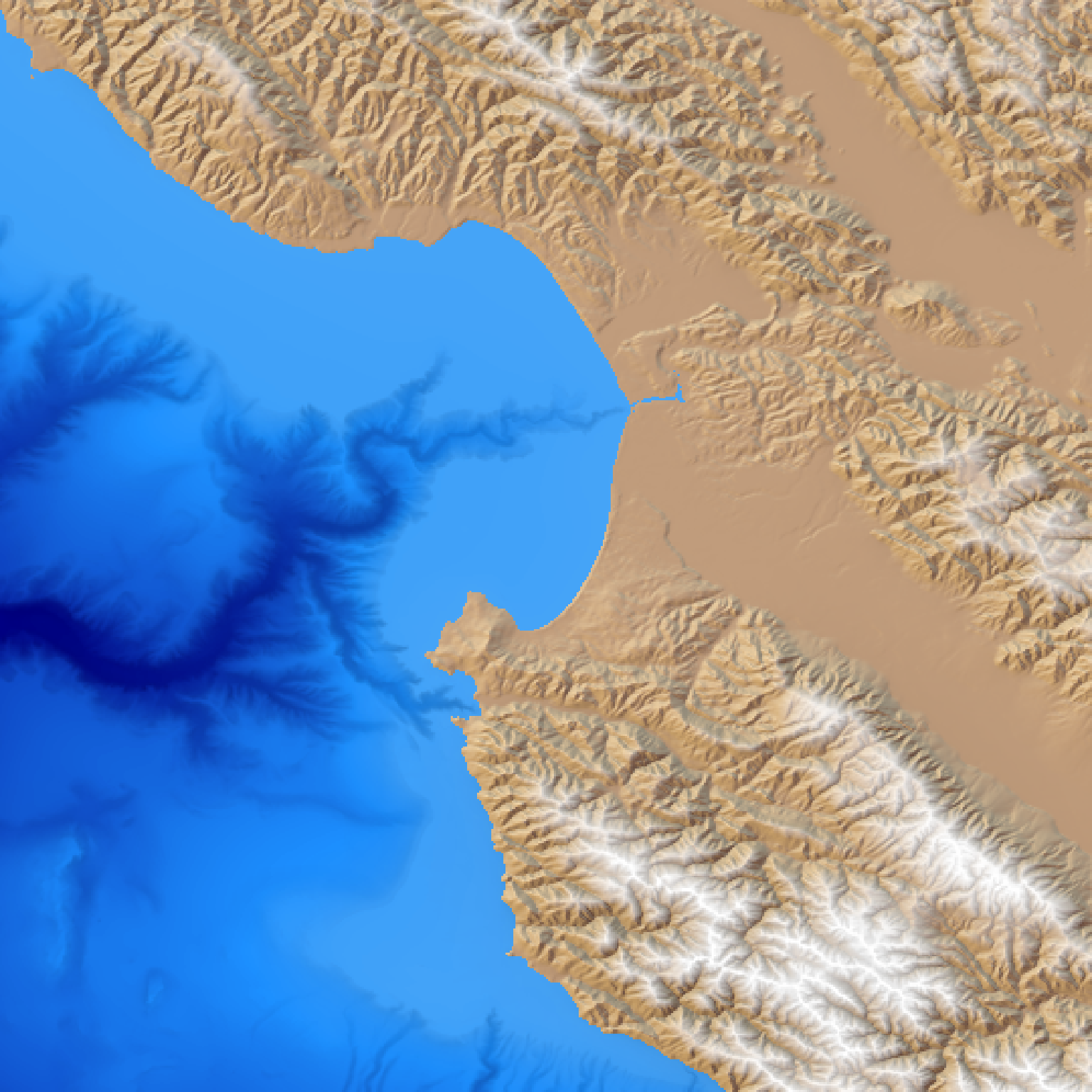Using a hillshade and the height map, generates a semi-transparent hillshade to layer onto an existing map.
generate_altitude_overlay(
hillshade,
heightmap,
start_transition,
end_transition = NULL,
lower = TRUE
)Arguments
- hillshade
The hillshade to transition into.
- heightmap
A two-dimensional matrix, where each entry in the matrix is the elevation at that point. All grid points are assumed to be evenly spaced.
- start_transition
Elevation above which
hillshadeis completely transparent.- end_transition
Default
NULL. Elevation below whichhillshadeis completely opaque. By default, this is equal tostart_transition.- lower
Default
TRUE. This makeshillshadecompletely opaque belowstart_transition. IfFALSE, the direction will be reversed.
Value
4-layer RGB array representing the semi-transparent hillshade.
Examples
#Create a bathymetric hillshade
if(run_documentation()) {
water_palette = colorRampPalette(c("darkblue", "dodgerblue", "lightblue"))(200)
bathy_hs = height_shade(montereybay, texture = water_palette)
plot_map(bathy_hs)
}
 if(run_documentation()) {
#Set everything below 0m to water palette
montereybay |>
sphere_shade(zscale=10) |>
add_overlay(generate_altitude_overlay(bathy_hs, montereybay, 0, 0)) |>
add_shadow(ray_shade(montereybay,zscale=50),0.3) |>
plot_map()
}
if(run_documentation()) {
#Set everything below 0m to water palette
montereybay |>
sphere_shade(zscale=10) |>
add_overlay(generate_altitude_overlay(bathy_hs, montereybay, 0, 0)) |>
add_shadow(ray_shade(montereybay,zscale=50),0.3) |>
plot_map()
}
 #Add snow peaks by setting `lower = FALSE`
snow_palette = "white"
snow_hs = height_shade(montereybay, texture = snow_palette)
if(run_documentation()) {
#Set the snow transition region from 500m to 1200m
montereybay |>
sphere_shade(zscale=10, texture = "desert") |>
add_overlay(generate_altitude_overlay(bathy_hs, montereybay, 0, 0)) |>
add_overlay(generate_altitude_overlay(snow_hs, montereybay, 500, 1200, lower=FALSE)) |>
add_shadow(ambient_shade(montereybay,zscale=50,maxsearch=100),0) |>
plot_map()
}
#Add snow peaks by setting `lower = FALSE`
snow_palette = "white"
snow_hs = height_shade(montereybay, texture = snow_palette)
if(run_documentation()) {
#Set the snow transition region from 500m to 1200m
montereybay |>
sphere_shade(zscale=10, texture = "desert") |>
add_overlay(generate_altitude_overlay(bathy_hs, montereybay, 0, 0)) |>
add_overlay(generate_altitude_overlay(snow_hs, montereybay, 500, 1200, lower=FALSE)) |>
add_shadow(ambient_shade(montereybay,zscale=50,maxsearch=100),0) |>
plot_map()
}
